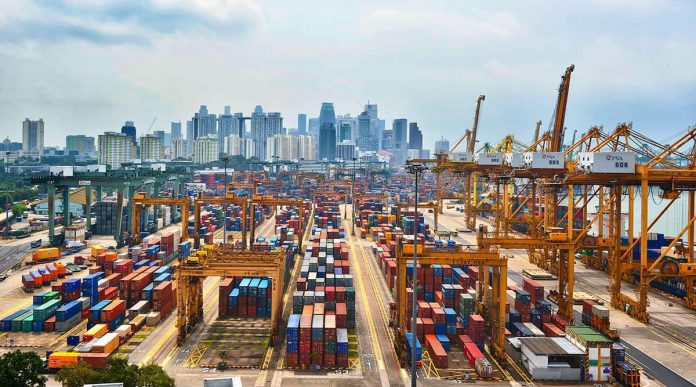I read it somewhere, and it made sense; the application of new digital technologies in the global supply chain is about two critical functions – ‘sensing’ and ‘sense-making’, where the first is about connecting and managing assets in transit, and the second is about gleaning new intelligence from the data they throw up.
A report by ABI Research considers the transformation of the supply chain through the prism of seven technologies , which support this new industrial discipline of sensing and sense-making. Its seven technologies, as below, are familiar by now; each headlines a chapter in the ABI report.
 The idea is their keenest proponents will achieve “better visibility, intelligence, and efficiency” in the supply chain. They are complementary, but they are not equal; they cross multiple verticals, besides the supply chain, as horizontal ‘enablers’ for digital reinvention.
The idea is their keenest proponents will achieve “better visibility, intelligence, and efficiency” in the supply chain. They are complementary, but they are not equal; they cross multiple verticals, besides the supply chain, as horizontal ‘enablers’ for digital reinvention.
In conversation with Enterprise IoT Insights, the report’s author, ABI senior analyst Nick Finill, says artificial intelligence (AI) is the king tech among them all, and the king-making tech for digitally progressive enterprises in any market. “AI is number one,” he says. “I’d say that without hesitation – simply for the use cases it enables, and the capabilities it provides.”
Most of these technologies build on the others, variously. Asset tracking feeds into intelligent transport, for example; every transaction goes down in a blockchain ledger. That’s the theory, anyway. Technologies are paired and picked off to serve distinct applications, whether for fleet logistics or warehousing.
But it is wrongheaded to conflate smart logistics, implying industrial intelligence, with asset tracking. Asset tracking is just the ‘internet of things’ in motion, a baseline for the whole market to jump to a new tune. Networking and positioning are the ‘sensing’ aspects in the new system.
The supply chain is a chain, after all, which flows in and out of a central manufacturing operation – backwards to the raw materials, and forwards to final sale. In the end, data from these seven technologies, installed variously across its expanse, will pool in a data lake, to be ‘made sense’ of. “AI is the key driving force; it ties all of these other technologies together,” says Finill.
Today, as a start point, enterprises are seeking to gear their chains-of-supply to forecast and fulfil demand. A recipe of wide area connectivity and light-touch analytics will help to dictate strategies for moving goods around. But the vision, pulling data in all directions, is different.
“It goes beyond demand forecasting to demand optimisation – so every single link in the chain works to create the optimal result for the business.”
Check out the new report from Enterprise Iot Insights: From supply chain to demand chain – how IoT and AI are enabling the supply chain to flex to changing demand.

